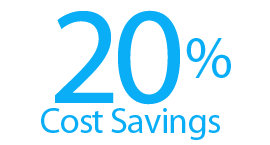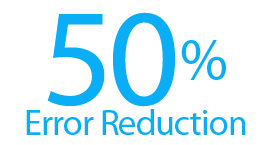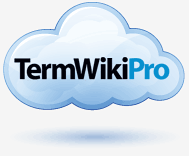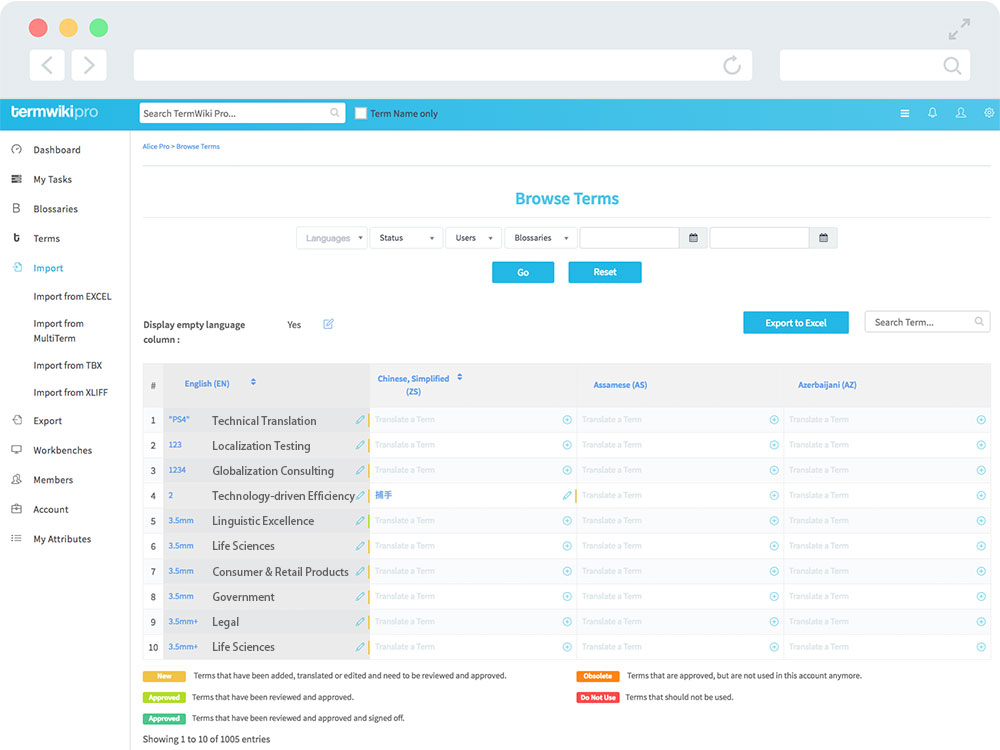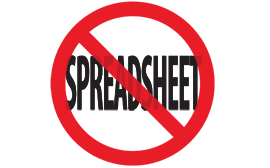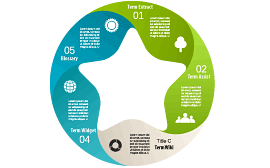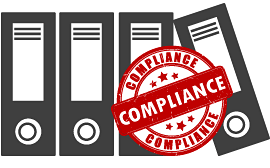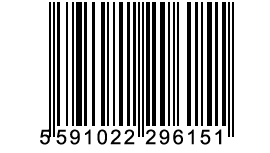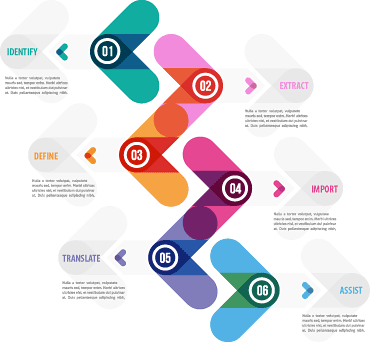Why Do I Need Terminology Management?
Simply put, effective terminology management at the source saves businesses 20% or more on translation costs by boosting the efficiency of content authoring and translation, while increasing linguistic quality.
Simply put, effective terminology management at the source of a project can save businesses 20% or more on translation costs by boosting the efficiency of content authoring and translation, while increasing linguistic quality.
Even if an author or translator has received specialized training in the target field, it still takes time to research important terminology during the content development and translation process.
This is why it is integral that they are provided with the right tools that enable them to utalize approved translations quickly and dynamically, thereby allowing them to focus on doing what they do best: translating.
We can help you organize and execute the management of your multilingual corporate glossary for long-term translation success and efficiency.
What is Terminology Management?
Terminology management is a process that language service providers (LSPs) use to maintain the consistency and continuity of language across a series of documents. Translation, localization, and transcreation are often incredibly complex undertakings involving multiple subject matter experts, linguists, and stakeholders, all of whom have specific knowledge to contribute to a project. Confusion can arise when so many parties work on the same document, and errors will doubtlessly occur at some point in the process. In some cases, those mistakes can be compounded over time, where a mistranslated or poorly localized phrase is carried across multiple documents.
Terminology management aims to eliminate those errors through standardization, ensuring all project stakeholders have identical resources to refer to when crafting translated materials. In this process, proper terminology management requires LSPs to work with their clients to create glossaries and databases of industry-specific and business-specific language for their linguists and translators. This allows all parties involved to use accurate and high-quality translations throughout the process, which can also act as a resource or reference material for future projects.
7 Million Terms and 1,800 Categories: Termwiki Pro
Powered by users from around the world, TermWiki.com is the world’s largest terminology website and database. Search for your terms and translations in 100+ languages.
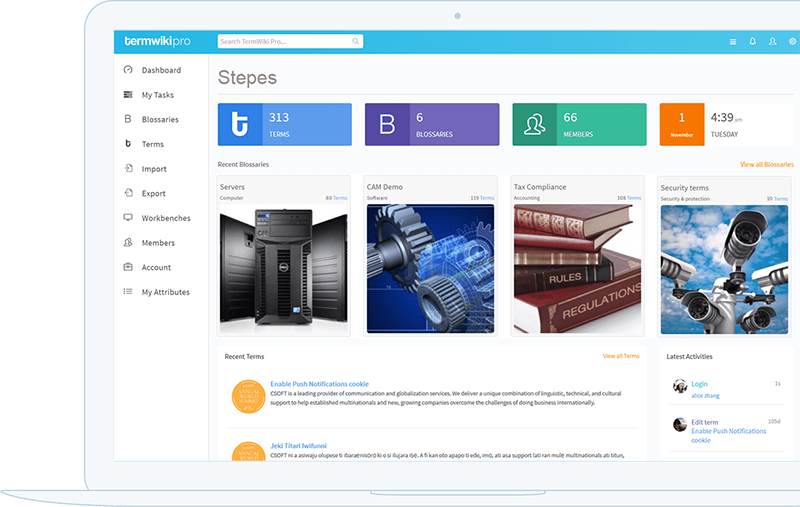
Most Translation Quality Issues Are Terminology Management Related
CSOFT’s internal research has found that the number one factor affecting content translation quality is the inaccurate and inconsistent use of technical terms specific to a particular industry and subject. Inaccurate or inconsistent use of terms not only causes confusion for readers, but it can also lead to poor product quality or usability. These issues emphasize the vital importance of terminology management as a formal part of the localization workflow and process.
Furthermore, time spent revising terminology errors can result in launch delays, or worse — potentially millions of dollars in damages from product recalls or fines. In the case of pharmaceuticals and other heavily regulated industries, terminology errors can also lead to customer safety issues and compliance risks that can jeopardize an entire operation.
TaaS – The New Approach to Terminology Management
TermWiki, the industry’s first terminology as a service (TaaS) system, revitalizes the traditional, off-the-shelf approach to terminology management by allowing organizations to efficiently develop, manage and translate terminology in an online collaborative environment without third-party software installation.
Proactive Terminology Management
Proactive terminology management involves the creation and maintenance of a multilingual database covering all the terminology that was used for a company’s products and marketing materials. Because technical terms can be very specific, and accuracy is of utmost importance, an ad hoc approach to terminology management is simply inefficient and does not achieve content quality.
From specifications and drawings to technical documentation, regulatory documents, and marketing collateral, all different forms of business communication are products of multiple authors in different locations. Because of this, terminology management is the most efficient solution to ensure that your business consistently speaks with one voice.
Securing terminological harmony across translated documents not only improves the usability of your products internationally, but it also enables companies to better adapt to global markets to establish a uniform corporate identity.
Going Beyond the Spreadsheet
More advanced terminology management involves further defining and classification of the terms so that they can be applied to specific product localizations and projects. Beyond the easy-to-use Excel tabular glossary list, there are many third-party tools that help collect, define, classify, and lookup terminology. These tools allow a translator to efficiently lookup and manage terms during translation by providing automatic lookup for terminology translation and a streamlined process for verifying terminology translation and consistency. Good terminology management tools also enable technical authors and translators to incorporate additional information, such as definitions, context, gender, source, synonyms, product dependency, etc. Some tools also allow terms to be extracted based on certain sets of criteria, such as occurrence, frequency, and origin.
Our Terminology Ecosystem
With terminology extraction (Term Extract), terminology management (TermWiki Pro), terminology lookup (Term Assist), businesses can publish their multilingual terminology and glossaries over the Internet with the TermWiki Widgt. This allows for customers, employees, and suppliers around the world to readily look up the specific information they need on demand. These online glossaries ensure quality, and that consistent expressions and terms are used throughout multinational marketing, branding, and regulatory compliance.
Consistent Corporate Communication
Terminology management enables organizations of any size to use the same terms consistently within and across the communication types that accompany a product or service. Typical communication types include but are not limited to technical specifications and documentation, drawings, user interfaces, human factors data, software strings, help systems, marketing materials and documents for regulatory submissions. As multiple authors typically contribute to these communications, terminology management is the most efficient solution for ensuring that the organization speaks with one, correct voice.
Streamlined Authoring, Editing, and Translation
Having a comprehensive, project-specific term base available at the outset of a project frees developers, writers and ultimately, translators from the tedious task of researching terms on their own. This also reduces the danger of multiple communicators accidentally coining multiple terms for the same feature, which can either go undetected and cause confusion for user or can potentially cause unnecessary expenses and delays to correct terminology harmonization throughout the product lifecycle.
Regulatory Compliance in the Life Sciences
The life sciences are a heavily regulated industry, in which organizations operating in this field are subject to government oversight. This means, for instance, that a wide variety of documents, such as clinical trial reports, user manuals, and product labeling, must be submitted to regulatory bodies for review, often on specific timelines. One important aspect of the formal quality of these submissions is the consistent use of correct terminology within any given document and across all documents in a submission package. Typically, many different, geographically distributed authors contribute to these submissions, and considering the endless opportunities for introducing synonyms and variants into these documents, terminology management is a mandatory part of any well-planned submission process.
Learn more about our comprehensive localization solutions for life sciences regulatory compliance.
Reduced User Support Cost
In the absence of controlled terminology and/or a system to ensure the consistent use of terminology across documents, and between the product itself and the instructions for the use of a product, terminological inconsistencies are expected to result in completely avoidable support costs. In an environment where content is typically created in a team, inconsistencies are almost inevitable. For example, technical authors write instructions and graphic artists create the visuals that illustrate these instructions, but neither the author nor the graphic artist may see his or her work in the context of the other contributors’ work. If a situation arises where a term used in an illustration does not match the terms used in the corresponding text, the user will, in all likelihood, be confused and either make an unnecessary support call or, even worse, return the product for a refund.
Reduced Inventory Carrying Cost
In any case, a term can designate a feature, function, item or component. If an organization uses more than one term for the same physical item, it is highly probable that multiple stock keeping units (SKUs) are assigned to the same article. This situation not only causes unnecessary inventory carrying costs, but also may prevent buyers from realizing volume discounts that they would otherwise have qualified for.
Six Steps to Manage Your Multilingual Terminology
In a nutshell, multilingual terminology management is the process of systematically developing, collecting, maintaining, and presenting words that have special meaning and application in each subject field. It is composed of the following processes:
- Identifying which key terms are most closely associated with the product you intend to localize.
- Mining legacy terms from previous versions of the product (and its related documentation) to ensure the maximum amount of content leverage.
- Defining each term and specifying a distinct set of terminological attributes (including part of speech, source context, usage status, etc.) that are most pertinent to your organization’s localization workflow.
- Collecting these core terms in a centralized, accessible environment (such as a terminology management system or software application).
- Translating each term into your organization’s core set of target languages, ensuring that your corporate terminology is consistent both across documents and across all languages.
- Dispersing multilingual glossaries to all functional groups that are involved in your product’s international development cycle.
CSOFT services several Fortune 500 companies around the globe, for whom we manage terminological data in more than 100 different languages. We can help you organize and execute the management of your multilingual corporate glossary, too. By proactively managing consistency issues at a very early stage, we can prevent minor discrepancies from becoming serious problems later in the localization cycle, when correction inevitably requires more time, effort, and money.
TEN Good Reasons to Manage Your Terminology
There is a common misconception among businesses engaging in localization that terminology management does not apply to their product development cycle. Whether because traditional methods of terminology management are ineffective, or due to a lack of understanding about the concrete benefits of maintaining corporate glossaries, many organizations are of the opinion that managing terminology is the sole responsibility of the language service provider (LSP) involved in a localization project.
Case Studies
The $71 Million Term
Terminology translation quality in health care and the life sciences industry can have a direct impact on patients’ safety. The following is an example from the book “Found in Translation,” illustrating how the mistranslation of a term resulted in a hospital’s $71 million dollar loss.
Manage Your Terminology to Meet International Regulatory Compliance
Despite the apparent importance of terminology management, many Life Sciences companies either lack a mature process that allows them to systematically manage product terminology or do not manage their terminology at all. Indeed, many companies would fail an FDA audit today if they were to be questioned on how terminology is created, reviewed, translated, and approved.
Dramatically Reduced Translation Turn-around Time
Some of CSOFT’s clients require their projects to not only meet high quality standards, but also to be delivered in a very short timeframe. To achieve turnaround times of 48 hours for these critical translation projects, CSOFT has developed a sophisticated workflow in which terminology management plays a pivotal role.


